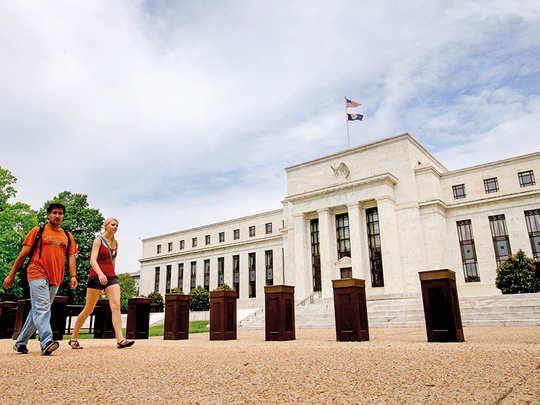
Washington: The US job market is hot. Inflation is not.
That’s the dilemma US central bankers face right now as they wonder why low levels of economic slack aren’t raising prices.
Federal Reserve officials are inclined to raise interest rates in June, minutes of their May meeting released Wednesday suggested. Their trepidation on what to do next, however, could increase.
The US unemployment rate fell to 4.4 per cent in April, the lowest level since 2007 and below the rate Fed officials view as maximum use of labour resources. Still, the consumer price index minus food and energy decelerated to 1.9 per cent in April, compared with 2.3 per cent in January.
Despite that, most Fed officials at their May 2-3 meeting judged it would “soon be appropriate” to raise interest rates again, the minutes showed. Fed signals rarely get more explicit than that.
Still, recent speeches and some language in the minutes also suggest the committee is beginning to divide over what actual inflation is telling them, versus their forecast for gradually rising prices.
Confusion there
“There’s a legitimate source of confusion there,” said Vincent Reinhart, chief economist at Standish Mellon Asset Management in Boston. “They’re working on a theory that there’s an association between changes in inflation and the unemployment rate. It’s in their models, but it’s not really evident in the data.”
For now, the committee is sticking with a policy based on its forecasts and discounting the most recent data as transitory. Participants, the minutes said, “continued to expect” inflation to stabilise around their 2 per cent target as the labour market and economy continued to improve and “transitory factors waned.”
The minutes also showed that certainty around that forecast isn’t high. “Several” officials warned of a scenario of rates having to rise faster because of further declines in unemployment, a stimulative fiscal policy, or rising wages. Conversely, “a couple” of others noted that inflation might not be as responsive to diminishing labour market slack.
Tightening path
“Inflation is clearly going to be an important consideration in the back half of the year on how fast they hike,” said Michael Hanson, chief US macro strategist at TD Securities USA. If prices don’t show a little more resilience, “it is a higher hurdle for them to hike.”
Consumer prices for May will be released at 8:30am on June 14, as the Federal Open Market Committee gathers for the second day of its next policy meeting. Investors see around an 80 per cent probability of a move at that meeting, according to pricing in federal funds futures.
From Germany to Japan to the US, central bankers have been flummoxed about why low jobless rates aren’t giving prices some lift. There could be many reasons. Greater dominance over labour markets by large firms gives them more pricing power in wage setting. Output per hour is low, giving firms little margin to raise wages without eating into profits.
Another year of undershooting inflation would be troubling for the Fed, which has only met its 2 per cent annual inflation target once since 2012, when it rose to 2.1 per cent in February. Eventually, consumers, businesses and investors might conclude that the central bank isn’t serious about hitting the goal.
Indeed, the Atlanta Fed says that 38 per cent of the firms it recently surveyed thought the central bank was more likely to accept inflation below the 2 per cent target compared with 25 per cent who thought it was symmetric, as the central bank has stated. That concern was also mentioned by a couple of other officials during the May meeting, the minutes showed.











